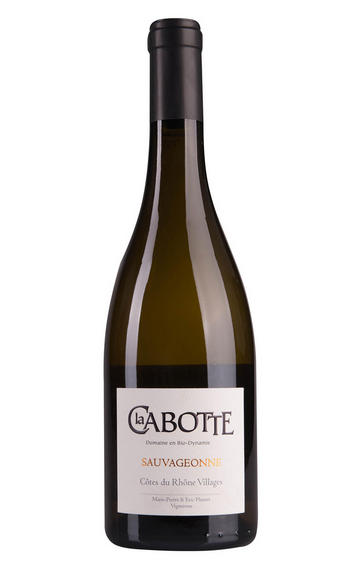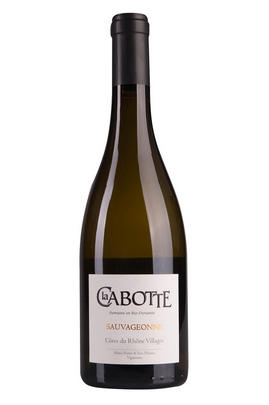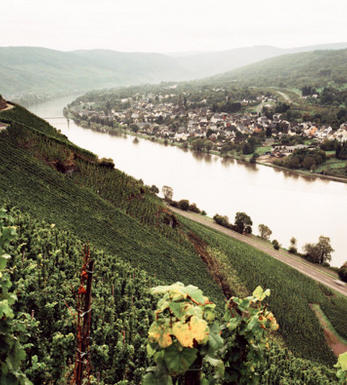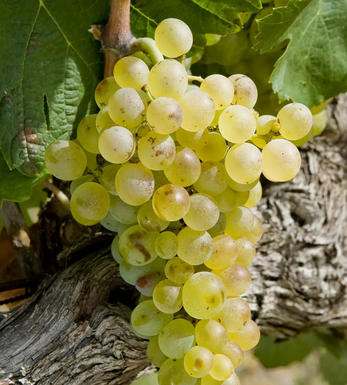
2017 Côtes du Rhône Villages Blanc, Sauvageonne, Domaine la Cabotte

About this WINE

Domaine la Cabotte
Purchased in 1981 and owned by the Plumet family ever since, the domaine has grown from 10 to 30 hectares of vines, with an additional 12 hectares coming on-stream this year, and 1.5 hectares in Châteauneuf-du-Pape. It is certified organic and farmed biodynamically. The mainly limestone and sand soils of the plateau of the Massif d’Uchaux are very poor in nutrients. This enables them to produce wines of real finesse and elegance in comparison to those from neighbouring appellations. Eric and Marie-Pierre Plumet believe that managing the environment around the vineyard is essential for a site’s health – from maintaining their 15 hectares of forest, to regulating water and the influence of wind, to promoting biodiversity. Son Etienne has been part of the team here for the past few years and is taking biodynamic innovations forward with his parents. Across the board, their wines are pure, mineral and fine.
The 2021 vintage was just as challenging for this domaine as it was for their neighbours, however, here Etienne talks of how their biodynamic approach saved them. He states that, after spraying vines that were 40% frosted with a valerian tea-infusion, the grapes recovered, leaving only 5% final damage. The freshness of 2021 is hugely complementary to Cabotte’s beautiful purity of style. These are wines with great ageing potential, especially La Sauvageonne. Etienne recently tasted a vertical of this wine from the last decade and each one was fresh as a daisy. The Colline Blanc is from the warmer and more fruit-forward 2022 vintage which Eric and Marie-Pierre describe as “one beautiful vintage in the making”.

Côtes du Rhône Villages
A clear step up from basic Côtes du Rhône in terms of both quality and price, the Côtes du Rhône Villages appellation covers an area of 5,700 hectares entirely within the Southern Rhône. About 15 percent of the size of its generic counterpart, it offers mostly excellent, very good value wines from all three hues that are more serious, concentrated and interesting.
Red wines dominate, made up of a minimum 50 percent Grenache, at least 20 percent Syrah and Mourvèdre, and no more than 20 percent from 10 other named varieties. Out of 95 communes that are eligible to use the Villages name, the finest 18 of them have the right to append their village name, as long as the wine is exclusively from that commune. The classification is quite fluid though, with Gigondas, Vacqueyras, and Beaumes de Venise and Vinsobres and Rasteau having been upgraded to AOC status, and other villages like Massif d’Uchaux and Plan de Dieu being added.
Best enjoyed from two to 10 years of age, the best wines probably come from Cairanne and Sablet, but all are well worth a look. The whites are rapidly improving and are delicious in their first three years. Rosé wines are made from the same cépage as the reds and are usually very good.
Recommended Producers: Chapoton, Domaine Cros de la Mûre, La Soumade

Clairette
Clairette is a white grape with a long history and is widely grown in various wine regions, particularly in France and other Mediterranean countries. It is known for producing wines with diverse styles, from dry to sweet and sparkling to still.
The variety is believed to have originated in the Rhône Valley, with historical references dating back to the 16th century. Nowadays, it is grown in several other Mediterranean regions, including Provence, Languedoc-Roussillon, Southern Rhône, and certain areas in Spain, Italy, and Algeria.
Clairette is a vigorous and high-yielding vine, making it relatively easy to grow in the vineyard. It prefers warm and sunny climates, which need plenty of sunlight to ripen fully. The grape clusters are medium-sized and compact.
The wines can vary in style, depending on the region and winemaking techniques. In some areas, it is used in blends to add acidity and structure, while in others, it can be the dominant grape in varietal wines.
The dry white wines typically exhibit delicate aromas of white flowers, citrus fruits, and sometimes hints of herbs. In certain regions, the variety is used to make sweet wines, either as a late-harvest style or as a component in fortified wines, such as the famous Muscat de Beaumes-de-Venise. Clairette is also used to produce sparkling wines, adding freshness and acidity to the blends.


Buying options
Add to wishlist
Description
This unique cuvee is made entirely from Clairette, spending 10 months in old oak barrels – not to impart oak flavours, but rather to allow micro-oxygenation which stabilises the wine and allows it to develop additional complexity. The resulting wine has a very mineral nose, with herbs and a hint of camomile. The palate starts gently with more mineral notes, but builds to very pure stone and citrus fruit notes, all in balance with the crisp acidity. Drink now to 2022.
Oliver Barton, Buyer Assistant
wine at a glance
Delivery and quality guarantee